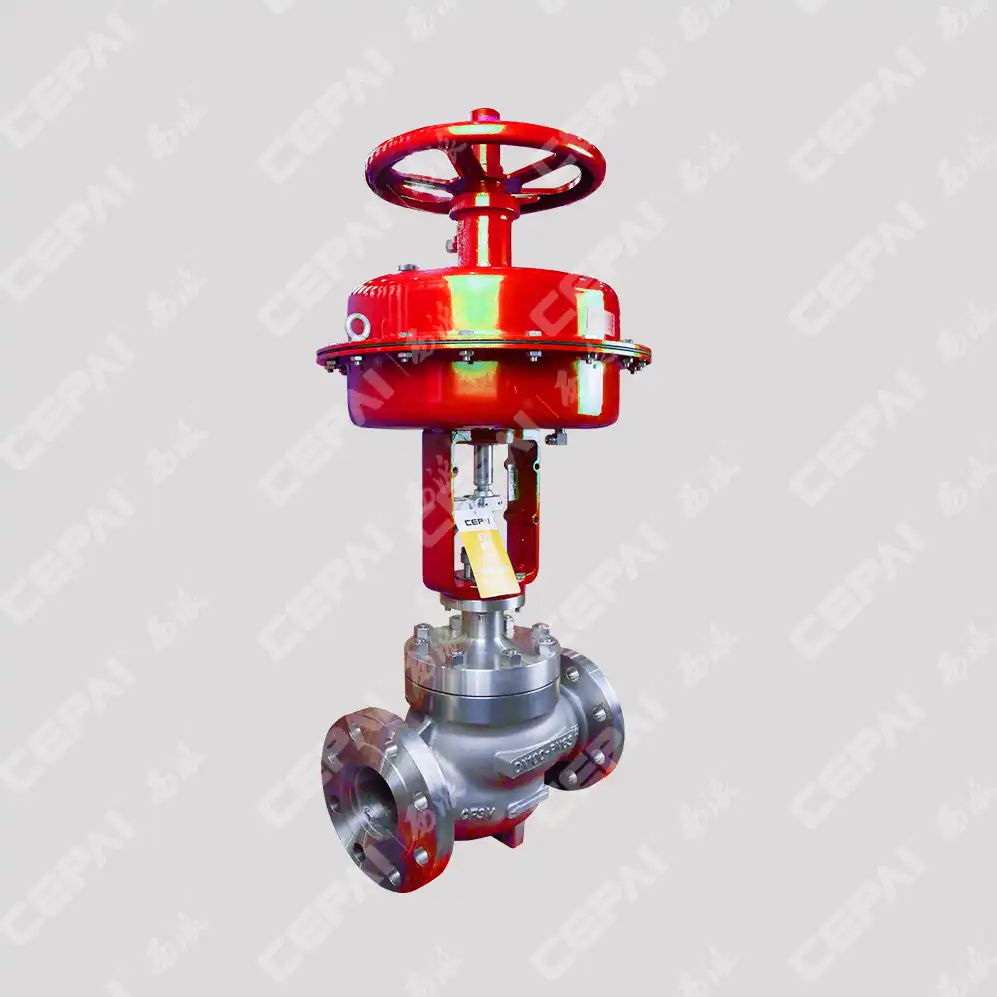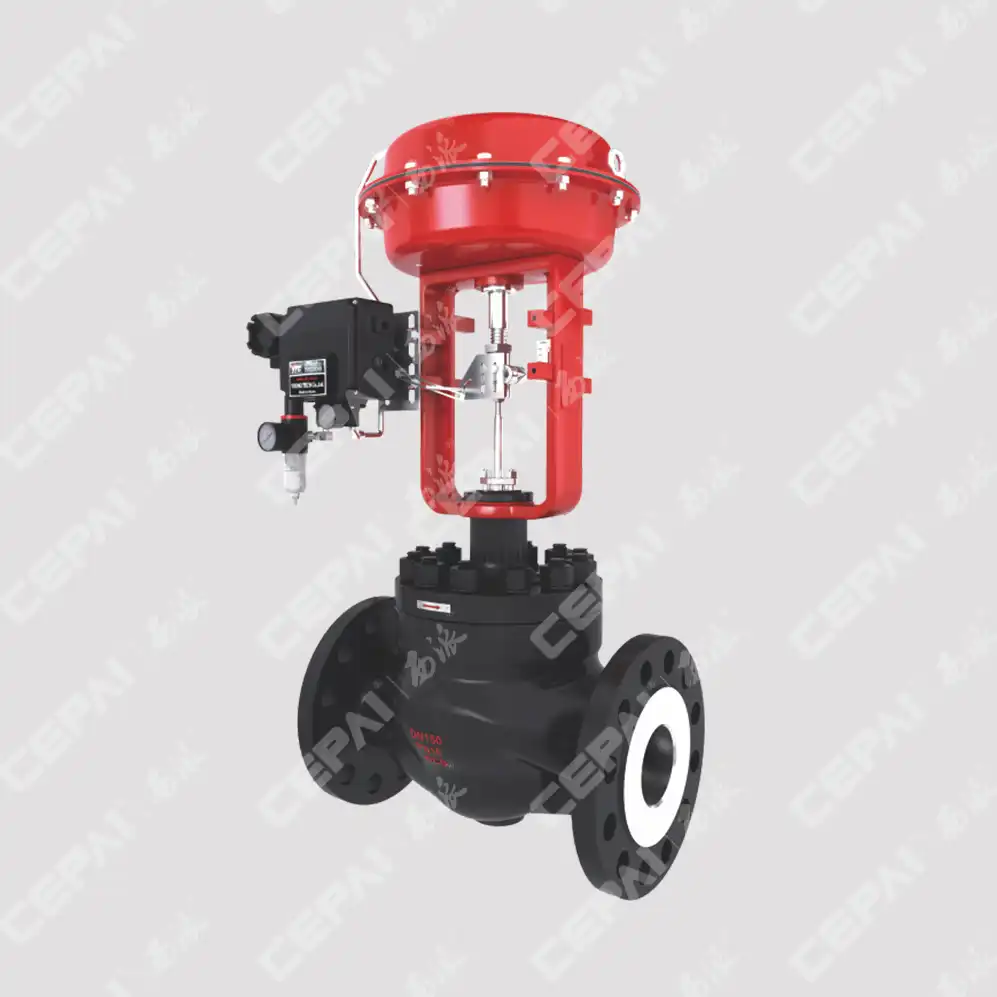Top Industrial Applications of Pneumatic Control Valves
Pneumatic control valves represent one of the most critical components in modern industrial automation systems, serving as the backbone for precise fluid control across diverse manufacturing sectors. These sophisticated devices utilize compressed air to regulate flow rates, pressure levels, and directional control of various media including liquids, gases, and steam. The versatility and reliability of pneumatic control valve technology have made them indispensable in industries ranging from oil and gas production to pharmaceutical manufacturing, where precision and safety are paramount concerns.
Essential Industries Utilizing Pneumatic Control Valves
Oil and Gas Production Operations
The oil and gas industry stands as the primary beneficiary of advanced pneumatic control valve technology, where these devices perform mission-critical functions throughout exploration, drilling, and production phases. In upstream operations, pneumatic control valves manage wellhead pressures during drilling activities, ensuring optimal extraction rates while maintaining safety protocols. These valves control the flow of drilling mud, a crucial component that maintains borehole stability, carries rock cuttings to the surface, and prevents blowouts. The harsh environmental conditions typical of oil fields, including extreme temperatures, corrosive media, and high-pressure scenarios, demand pneumatic control valves engineered with exceptional durability and precision. Modern pneumatic control valve systems in this sector incorporate advanced materials such as duplex stainless steel and specialized coatings to withstand hydrogen sulfide exposure and other corrosive elements commonly encountered in petroleum applications.

Chemical and Petrochemical Processing
The chemical processing industry relies heavily on pneumatic control valve systems for maintaining precise reaction conditions and ensuring product quality consistency. These valves regulate the flow of raw materials, intermediates, and finished products through complex processing networks where even minor deviations can result in significant quality issues or safety hazards. In petrochemical refineries, pneumatic control valves manage catalyst circulation systems, where precise flow control directly impacts conversion efficiency and product yields. The ability of these valves to provide rapid response times and accurate positioning makes them ideal for applications involving exothermic reactions that require immediate intervention to prevent runaway conditions. Additionally, pneumatic control valve technology enables seamless integration with distributed control systems, allowing operators to monitor and adjust process parameters remotely while maintaining optimal safety margins.
Power Generation and Energy Systems
Power generation facilities extensively utilize pneumatic control valve technology to optimize combustion processes, steam distribution, and cooling systems across various energy production methods. In fossil fuel power plants, these valves control fuel gas flow to burners, ensuring optimal air-to-fuel ratios that maximize combustion efficiency while minimizing emissions. Steam turbine systems depend on pneumatic control valves for precise steam admission and extraction control, directly influencing power output and thermal efficiency. Nuclear power facilities employ specialized pneumatic control valves designed to meet stringent safety requirements, including fail-safe operation modes and radiation-resistant materials. The renewable energy sector has also embraced pneumatic control valve technology, particularly in geothermal power systems where these valves manage high-temperature steam extraction and in biomass facilities where they control fuel feeding systems and emission control processes.
Critical Applications Requiring Pneumatic Control Valve Precision
Process Control and Automation Systems
Industrial automation systems represent perhaps the most sophisticated application of pneumatic control valve technology, where these devices serve as the primary interface between digital control systems and physical processes. In automated manufacturing environments, pneumatic control valves enable precise control of material handling systems, including powder feeding, liquid dosing, and gas mixing applications. The inherent safety advantages of pneumatic systems make these valves particularly valuable in environments where electrical components pose explosion risks. Advanced pneumatic control valve designs incorporate digital positioners and smart communication protocols, enabling predictive maintenance capabilities and real-time performance monitoring. These intelligent systems can detect valve wear patterns, predict maintenance requirements, and automatically adjust control parameters to compensate for component aging, thereby extending operational life and reducing unexpected downtime.
Safety and Emergency Shutdown Systems
Safety instrumented systems rely on pneumatic control valve technology to provide fail-safe operation during emergency conditions, where rapid response times can prevent catastrophic incidents. Emergency shutdown valves, a specialized category of pneumatic control valves, are designed to achieve full closure within seconds of receiving a safety signal, effectively isolating hazardous processes from potential ignition sources or uncontrolled releases. These systems incorporate redundant pneumatic circuits and backup air supplies to ensure reliable operation even during facility power outages. Fire suppression systems in industrial facilities utilize pneumatic control valves to distribute suppression agents rapidly and accurately to affected areas, where precise flow control can mean the difference between successful fire suppression and extensive property damage. The proven reliability of pneumatic control valve technology in safety applications has made them the preferred choice for applications where human safety and environmental protection are primary concerns.

Quality Control and Product Consistency
Manufacturing processes requiring consistent product quality depend on pneumatic control valve precision to maintain critical process parameters within narrow tolerances. In pharmaceutical manufacturing, these valves control the flow of active ingredients, solvents, and cleaning solutions where contamination risks must be minimized through precise flow control and quick changeover capabilities. Food and beverage production facilities utilize sanitary-grade pneumatic control valves designed to meet strict hygiene standards while providing accurate portion control and ingredient mixing. The repeatability and accuracy of modern pneumatic control valve systems enable manufacturers to achieve consistent product quality while minimizing waste and reducing production costs. Advanced control algorithms integrated with pneumatic control valve systems can automatically compensate for variations in raw material properties, ambient conditions, and equipment wear, maintaining product specifications throughout extended production runs.
Advanced Technologies in Pneumatic Control Valve Systems
Smart Valve Technologies and Integration
The evolution of pneumatic control valve technology has embraced digital transformation through the integration of smart sensors, wireless communication, and advanced diagnostics capabilities. Modern pneumatic control valves incorporate embedded microprocessors that continuously monitor valve performance parameters including position feedback, supply pressure, and actuator force requirements. These intelligent systems provide real-time data to plant operators, enabling proactive maintenance strategies that reduce unplanned outages and extend equipment life. Wireless communication protocols allow pneumatic control valve systems to integrate seamlessly with existing plant networks, providing remote monitoring capabilities and enabling centralized control of distributed valve networks. The implementation of artificial intelligence algorithms in pneumatic control valve systems has revolutionized predictive maintenance approaches, where machine learning models analyze historical performance data to predict potential failures before they occur.
Environmental Compliance and Efficiency
Environmental regulations have driven significant innovations in pneumatic control valve technology, particularly in applications involving volatile organic compounds and greenhouse gas emissions. Low-emission pneumatic control valves incorporate specialized sealing systems and optimized actuator designs that minimize fugitive emissions while maintaining precise control performance. Energy-efficient pneumatic control valve designs reduce compressed air consumption through improved actuator efficiency and optimized control algorithms that minimize unnecessary valve movements. Water treatment facilities utilize advanced pneumatic control valves designed to handle corrosive chemicals and maintain precise pH control while minimizing chemical waste and environmental impact. The development of biodegradable lubricants and environmentally friendly materials for pneumatic control valve components reflects the industry's commitment to sustainable manufacturing practices.
Customization and Application-Specific Solutions
The diverse requirements of modern industrial applications have driven the development of highly specialized pneumatic control valve solutions designed for specific operating conditions and performance requirements. High-temperature applications in metallurgical processes require pneumatic control valves constructed with refractory materials and specialized cooling systems to maintain operational integrity in extreme thermal environments. Cryogenic applications demand pneumatic control valve designs that maintain flexibility and sealing performance at extremely low temperatures while preventing ice formation that could impair operation. Abrasive service applications utilize hardened trim materials and specialized flow path designs that minimize erosion and extend service life in challenging conditions. The ability to customize pneumatic control valve specifications for unique applications has enabled their adoption in emerging technologies including hydrogen production, carbon capture systems, and advanced materials processing.
Conclusion
Pneumatic control valves have established themselves as indispensable components across numerous industrial sectors, providing reliable, precise, and safe fluid control solutions. From oil and gas operations to chemical processing and power generation, these versatile devices continue to enable efficient industrial processes while meeting increasingly stringent safety and environmental requirements. As industries evolve toward greater automation and sustainability, pneumatic control valve technology will undoubtedly continue advancing to meet future challenges.
Experience the CEPAI advantage in pneumatic control valve solutions. Our commitment to exceptional durability, high-precision control performance, and continuous R&D investment ensures your operations benefit from cutting-edge valve technology. With comprehensive pre-sales technical consultation, customized solutions, and reliable after-sales support, CEPAI delivers the quality and service excellence your projects demand. Our ISO-certified quality management system and advanced testing capabilities guarantee zero-defect products that meet international standards. Ready to optimize your industrial processes with premium pneumatic control valves? Contact our technical experts today at cepai@cepai.com for personalized consultation and discover how CEPAI's innovative solutions can enhance your operational efficiency and reliability.
References
1. Smith, J.A., and Johnson, M.K. "Advanced Pneumatic Control Systems in Modern Industrial Applications." Journal of Process Control Engineering, vol. 45, no. 3, 2023, pp. 178-195.
2. Chen, L., et al. "Safety Instrumented Systems and Emergency Shutdown Valve Technologies." Industrial Safety and Reliability Quarterly, vol. 28, no. 2, 2023, pp. 89-107.
3. Rodriguez, P.M., and Thompson, R.L. "Environmental Compliance in Pneumatic Valve Systems: Reducing Emissions and Improving Efficiency." Environmental Engineering Review, vol. 31, no. 4, 2023, pp. 245-262.
4. Anderson, K.W. "Smart Valve Technologies and Digital Integration in Process Industries." Automation and Control Systems Magazine, vol. 19, no. 1, 2023, pp. 34-52.
5. Williams, D.R., and Brown, S.J. "Material Selection and Design Considerations for High-Performance Pneumatic Control Valves." Materials Engineering International, vol. 52, no. 7, 2023, pp. 112-128.
6. Taylor, M.E., et al. "Predictive Maintenance Strategies for Pneumatic Control Valve Systems in Critical Applications." Maintenance Engineering Today, vol. 41, no. 6, 2023, pp. 67-84.

Get professional pre-sales technical consultation and valve selection services, customized solution services.

About CEPAI


